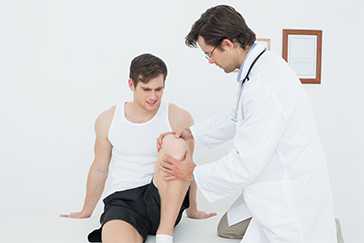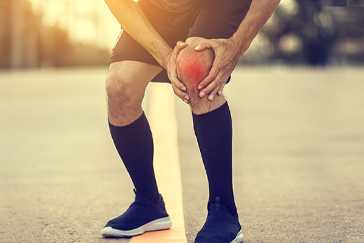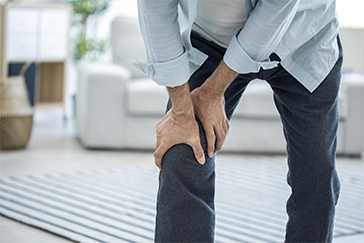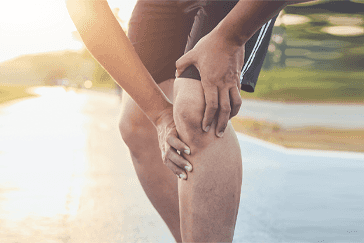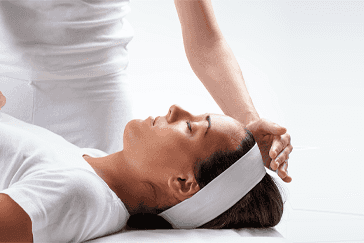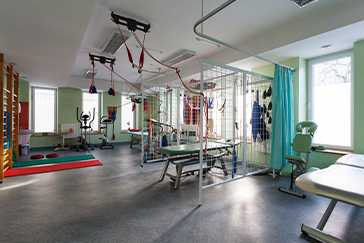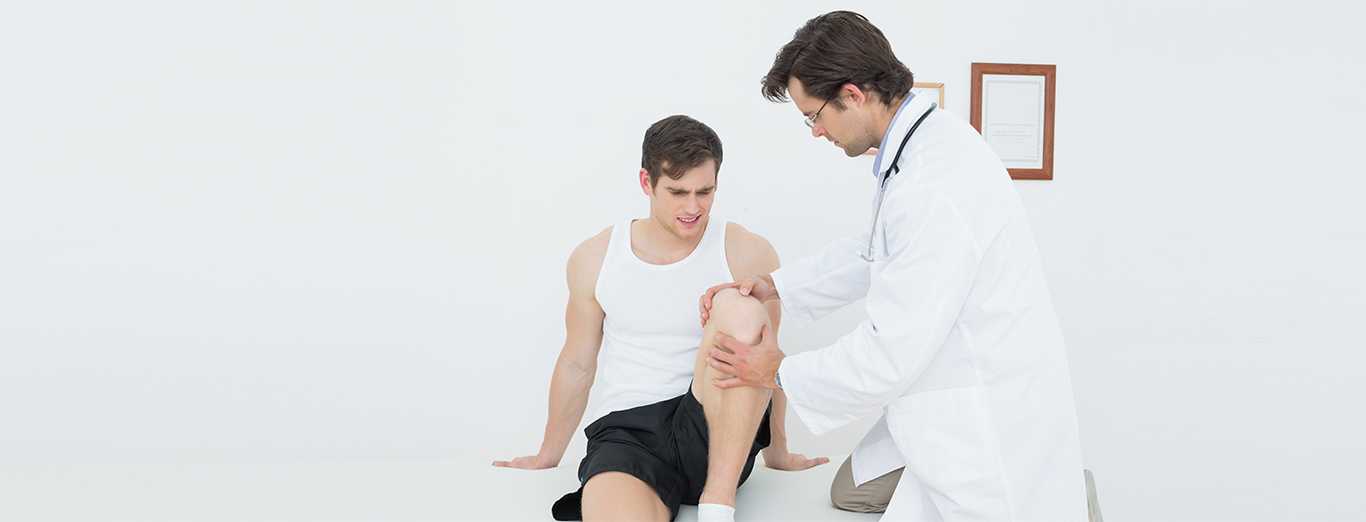
physiotherapy for knee pain

These Might be of Interest

what is knee pain?
Knee pain is a prevalent issue globally, primarily affecting the elderly. It can stem from various causes such as injuries, an unhealthy lifestyle, or underlying medical conditions. While minor knee pain can often be alleviated with home remedies, more severe cases demand professional medical attention for proper treatment. The prevalence of knee pain underscores the importance of maintaining joint health through lifestyle choices and prompt intervention when needed, especially in the aging population where such discomfort is most common.
symptoms of knee pain
Some of the symptoms of severe knee pain include,
- Swelling and stiffness in and around the knee
- Redness and feeling of warmth near the knee
- Weakness or instability in the knee
- Popping and crunching noises from the knee at the time of sitting and standing
- Unable to completely straighten the knee.
If you are experiencing such symptoms, then you should see a doctor immediately to get relief as home remedies for knee pain are just not going to offer much knee pain relief in the above symptoms.
causes of knee pain
Knee pain often arises from various sources, with injuries, mechanical issues, and arthritis being prominent causes. In the case of injuries, significant harm can occur to the knee’s bones, cartilage, ligaments, tendons, or bursae (fluid-filled sacs). Trauma, falls, or overuse can lead to structural damage, triggering pain and discomfort. Understanding the specific nature of the injury is crucial for effective treatment, as it helps tailor interventions to address the affected components, whether bone, cartilage, ligaments, tendons, or bursae, facilitating a targeted approach for relief and recovery.
types of knee pain injury:
- ACL Injury: Anterior Cruciate Ligament injury or ACL injury is one of the most common knee pain reasons found in sportspersons. ACL injury takes place when the ACL gets stretched, partially torn or completely torn. Activities involving sudden stops and changes in direction, as seen in soccer, tennis and basketball are primarily responsible for this type of injury.
- Fractures: Fracture to the knee or Patella can be excruciatingly painful and can be caused due to fall or eccentric contraction. People with osteoporosis can fracture their knee by as simple an activity as wrong stepping.
- Torn Meniscus: Meniscus is the rubbery cartilage and can be torn by suddenly twisting while carrying heavy weight.
- Knee Bursitis: Knee bursitis is the inflammation of the bursae caused by knee injuries.
- Patellar Tendonitis: Patellar tendonitis more commonly referred to as jumper’s knee is an overuse injury caused as a result of the patellar tendon being overstressed.
mechanical problems
Some of the mechanical problems that cause knee pain are;
- Loose Bodies in Knee: Loose bodies in the knee joint are little sections of ligament or bone that move openly around the knee in joint liquid, or synovium. They can prevent the joint movement by getting captured in flexion and extension movements. These loose bodies can cause harm to the articular ligament, causing osteoarthritis.
- Iliotibial band syndrome. – This happens when the extreme band of tissue gets so tight that it rubs against the external bit of the femur. Sprinters are particularly susceptible to Iliotibial band syndrome.
- Dislocated kneecap – Dislocated kneecap is the dislocation of the patella. In a few cases the kneecap may stay dislocated and you can easily see the dislocation.
- Hip or foot pain – We often have the tendency to alleviate pressure from the foot or hip that hurts and adjust to walking by putting maximum weight on the other foot. This puts added pressure on one knee causing knee pain.
what are type of arthritis causing knee pain?
Arthritis is of innumerable types and several of them are capable of causing knee pain like;
- Osteoarthritis: Also referred to as Degenerative arthritis is the most common form of arthritis. It is an overuse problem caused due to age related wear and tear of the cartilage in the knee. Osteoarthritis is also one of the primary knee pain reasons.
- Rheumatoid Arthritis: It is one of the worst forms of arthritis causing debilitating pain in almost any joints of the body.
- Gout – This sort of joint pain happens when uric acid stones develop in the joint. While gout normally affects the big toe, it can also be one of the knee pain reasons.
- Pseudogout – Pseudogout is caused by calcium-containing crystals formed in the joint liquid and is one of the many knee pain reasons.
- Septic Arthritis – Septic arthritis is the infection in the knee joint causing redness, swelling and fever.
prevention from knee pain
By following a few suggestions one can take better care of their knees and avoid knee pain to a large extent. Some of the healthy habits to adopt for knee pain are as follows;
- Keep additional pounds off and keep up a sound weight to avoid exerting undue pressure on the knees and to avoid problems like osteoarthritis.
- Be fit and agile to play sports. Practicing regularly and warming up is essential for your knee health to avoid sudden pressure and stress to the knees resulting in a knee injury.
- Practice exercises for knee pain regularly, if you are suffering from osteoarthritis, switch to swimming or water aerobics for healthy knees.
home remedies for knee pain:
Home remedies for knee pain come handy in the elimination of minor forms of knee pain, but more severe forms of knee pain require medical attention like surgery and therapies. The most common of the home remedies for knee pain is the application of the RICE treatment which is REST- ICE – COMPRESSION – ELEVATION. RICE treatment involves giving the feet some rest, application of a cold compress; wrap the knee with a compression bandage to prevent swelling and finally keeping the feet in an elevated position while resting.
If even after the trial of home remedies for knee pain, the pain does not subside then it is better to get yourself examined by a doctor for other treatments.
different types of knee pain treatment
The treatment for knee pain can be varied depending upon the type of knee pain. Some of the standard treatments offered for knee pain solution include knee pain medicine, injections, physiotherapy for knee pain and surgery.
- Medications: Some of the knee pain medicine usually prescribed for knee pain is pain relievers, analgesics, anti – inflammatory drugs and anti – rheumatic drugs.
- Injections – Corticosteroids injections are administered to help in knee inflammation. Other injections administered for knee pain include – hyaluronic acid supplements and arthrocentesis (joint fluid aspiration)
- Surgery – The various types of knee surgery recommended for knee pain are – Knee replacement, Arthroscopy and Osteotomy.
- Physiotherapy – Physiotherapists assess the condition of the patient and recommend appropriate knee pain exercise. These knee pain exercises are aimed at providing greater mobility and flexibility of the knees. With regular practice of the knee pain exercises strengthen the muscles around the knee thereby, reducing knee injuries.
LIGAMENT INJURIES
Our lower leg bones are connected to the thigh bones through the ligaments. They help us to maintain the stability of our movements. In this case, we need to consider the role of three ligaments here, namely, Anterior Cruciate Ligament (ACL), Medial Collateral Ligament (MCL) and Posterior Cruciate Ligament (PCL). Sprains caused by either of these ligaments can result in knee pain. Excessive pain could require surgery. You need not be acquainted with medical parlance particularly, but you definitely need to pay attention to this.
CARTILAGE RUPTURE
We all know the importance of cartilage. Cartilage is a firm yet flexible connective tissue which acts as a protective cushion between the bone joints. Damage to the cartilage can cause severe joint pains and swelling. This cartilage consists of two menisci; medial meniscus (inside the knee) and lateral meniscus (outside the knee). In each of the knee joints, two menisci are present. Too many activities can leave them mutilated. Meniscus tear can also occur as a result of osteoarthritis, a joint disorder mostly observed in aged men and women. A crack in the knee cartilage is a common injury, and it usually requires an effective surgery. Don’t worry, take action instead!
ARTHRITIS
Arthritis is often too simplified and misunderstood as a disorder. Relevant studies have shown that most of the people suffer from physical disabilities due to arthritis. Both adults and children are diagnosed with arthritis. Arthritis is one important reason for knee pain. Common types of arthritis include:
• Osteoarthritis
• Rheumatoid arthritis
• Post-traumatic arthritis
Relevant devices, therapies, surgery or even anti-inflammatory drugs are deployed to treat the condition. It is advisable to fetch specific treatments on time. Why pay a bigger price then?
how can we help with knee pain?
Knee pain is a debilitating disease and even commuting to a doctor’s clinic proves to be a mammoth and extremely painful task. Now with the availability of health home care, patients suffering from severe knee pain do not need to undertake any travel to seek quality healthcare. Portea offers the best knee pain physiotherapy at home along with the best of nursing services and other healthcare professionals to offer you the best treatment for knee pain that too at the comfort of your home. Get the best knee pain physiotherapist from portea.
With Portea, you’re not just getting physiotherapy for knee pain at home ; you’re gaining a partner in your journey to recovery and well-being. We also offer a range of superior healthcare services, including doctor consultations, medical equipment, nursing home care, and dedicated caretakers. Rely on us for top-tier healthcare solutions tailored to your requirements.
MEET OUR PHYSIOTHERAPISTS FOR KNEE PAIN
- Dr. A Franklin Rajkumar – BPT – 10 years Experience
- Dr.L Swarna Harini-MPT/BPT – 6 years Experience
- Dr. Ramya Deepika.C.C -MPT -7 years Experience.
faqs
Does physiotherapy relieve knee pain?
Is physiotherapy effective for knee pain? The short answer is yes. Whether you have an acute sports injury or long-term discomfort from osteoarthritis, physiotherapy is particularly useful for knee pain.
What workouts relieve knee pain?
Knee Full Extension Exercise – Begin by sitting in a chair that is high enough for the knee to bend to a 90-degree angle. Slowly lift the leg until it is horizontal. Hold for five seconds, then carefully lower it to the ground. Repeat with the opposite leg.
Which treatment is best for knee pain?
Physical treatment – A physical therapist will demonstrate stretches and exercises to strengthen the muscles around your afflicted knee. This will increase your stability and decrease pain.
Is it okay to walk with knee pain?
Walking at a moderate pace for 30 minutes each day can assist with knee pain. Be cautious of the surfaces you walk on. Walking barefoot on rough marble floors, pebbled roads, and cobblestone streets is strictly prohibited. Uneven surfaces can increase stress on your knee joints.
What’s the primary cause of knee pain?
Knee discomfort may be caused by an injury, such as a burst ligament or torn cartilage. Knee discomfort may also be caused by medical disorders such as arthritis, gout, or infections. Self-care methods are effective for many types of minor knee pain. Physical therapy and knee braces can also provide pain relief.
Doctor Consultation
Nursing
Physiotherapy
Trained Attendant
Elder Care
Mother & Baby Care
Lab Tests
Medical Equipment
Speciality Pharma
Critical Care

